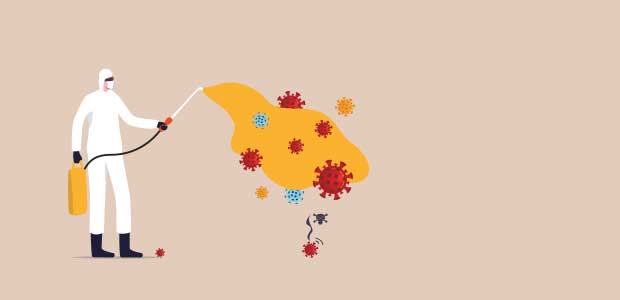
The Second Wave: Who is Vulnerable and What Can We Do?
Are you worried about a second wave of COVID-19?
- By Gen Handley
- Sep 10, 2020
In 1918, an influenza pandemic, swept the world, infecting 500 million people or one-third of the world’s population. The number of deaths was estimated to be at least 50 million worldwide with about 675,000 occurring in the US. The worst months were in September and October when the second wave of the virus when close to 200,000 Americans passed away from the virus.
Are you worried about a second wave of COVID-19? This is on the minds of many people, particularly organizations who have only recently welcomed back employees to the worksite. While all industries and categories of workers are in some way affected by the virus and the resulting social distancing rules, there are five types of essential lone workers who are especially vulnerable to another bout with the deadly virus.
Community healthcare workers
If or when another wave does hit, our hospitals will be stretched thin and there will be lone healthcare workers venturing out into the community to provide care in our homes. These brave workers will not only need to be provided with all of the necessary PPE (personal protective equipment), but they will require constant communication with their managers and co-workers.
Agriculture workers
When you visit the grocery store, it is easy to forget all of the workers who helped pick that fruit or harvest the wheat for that bread. There are many agricultural and farm workers out in the fields alone, making sure that we can put food on our tables and keep ourselves healthy in the face of a potentially deadly virus. Agriculture operations need to go the extra mile when protecting workers, particularly against fall injuries that can occur so frequently in this industry.
Energy workers
Especially in a pandemic, we need to keep the lights on and our hospitals and homes warm and running. Those working in the energy industry are ensuring that happens, exposing themselves to a number of safety hazards like deadly falls, electrocution, as well as burns. In the event of a second wave, there will be even more pressure to maintain the flow of electricity and gas during the cold fall and winter months.
Elderly care workers
It is no secret that a significant number of COVID-19 outbreaks have occurred in nursing home and long-term care facilities across the US. In fact, nearly one-third of all US coronavirus deaths are the residents of these facilities or the workers, infecting more than 238,000 at more than 10,000 facilities. Workers in these facilities are extremely vulnerable while providing needed care for an elderly population who is also very vulnerable. The Centers for Disease Control and Prevention has number of recommendations to protect the workers and residents from the virus.
Dentists and dental hygienists
Unfortunately, there is no virtual means of providing dental care so individuals must physically visit the dentist office for any needed care. This and the fact that COVID-19 is found in saliva, makes dentists and dental hygienists vulnerable to the virus. Additionally, procedures such as ultrasonic scaling and air polishing create aerosols that can infect these workers. Constant sanitization, improved air ventilation as well as increased mandatory PPE like face shields are needed.
Bracing for a Storm
While it is yet to be known how debilitating another wave will be, industries are already looking at how to protect their workers, like those above, as well as how to track the virus and isolate it before it spreads through tools like contact tracing and innovative developments in PPE. John Hopkins Medicine recommends:
- Continue to practice COVID-19 precautions, such as physical distancing, hand-washing and mask-wearing.
- Stay in touch with local health authorities, who can provide information if COVID-19 cases begin to increase in your city or town.
- Make sure your household maintains two weeks’ worth of food, prescription medicines and supplies.
- Work with your doctor to ensure that everyone in your household, especially children, is up to date on vaccines, including this year’s flu shot when it is available.
Whatever takes place, we, as a global society, must be vigilant and continue to care for each other, practicing the mitigation techniques we have learned over the past surreal year.